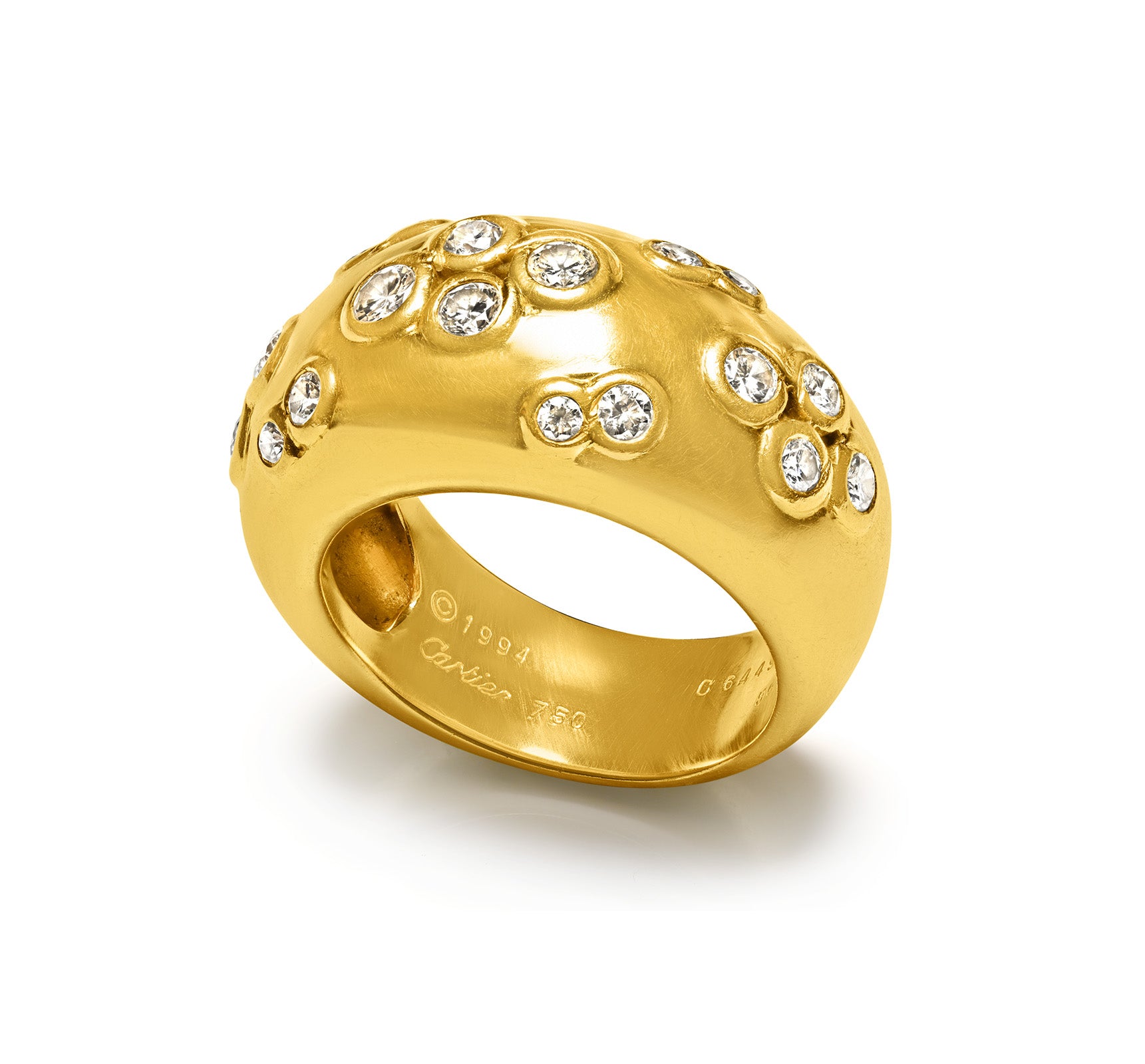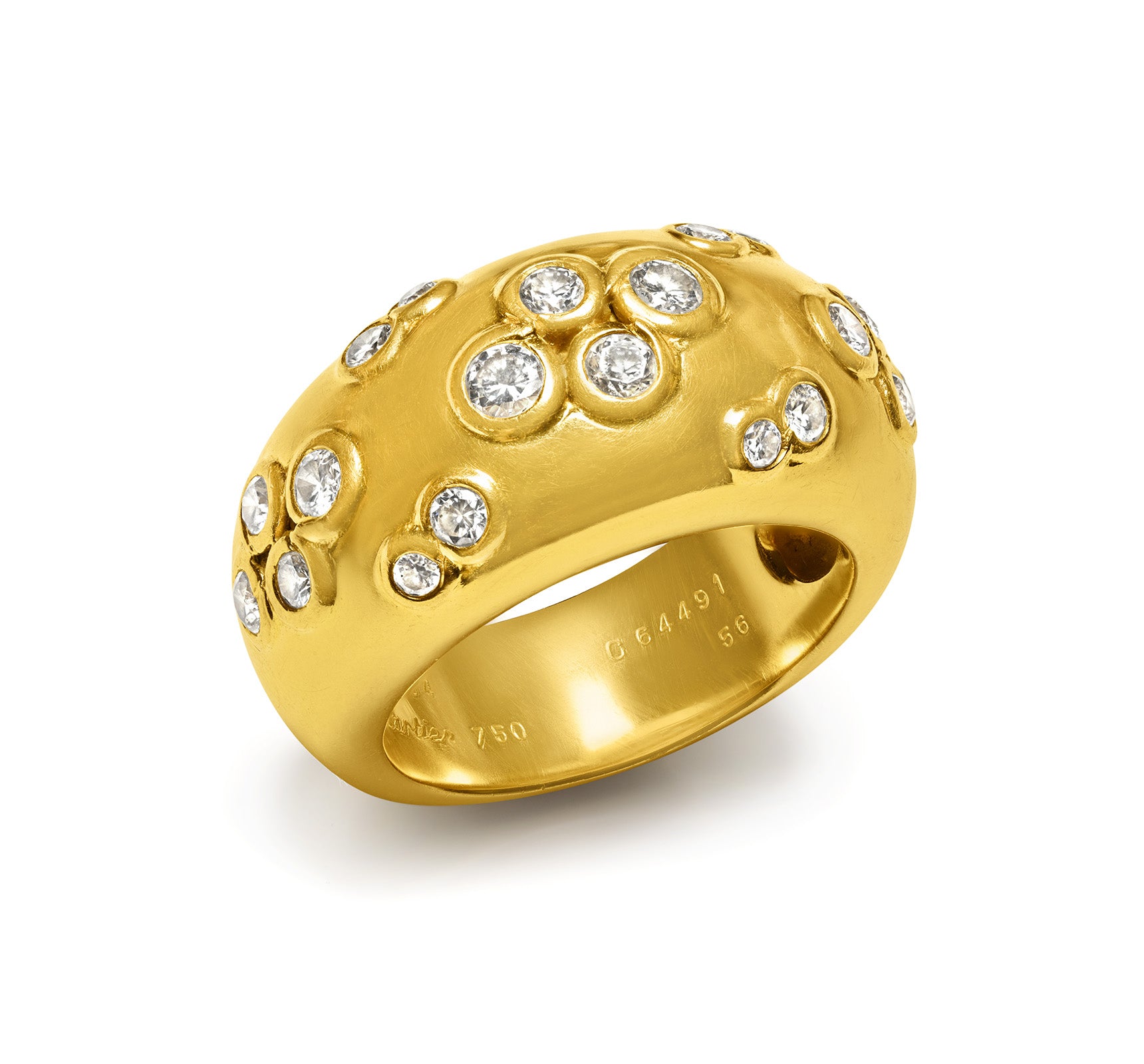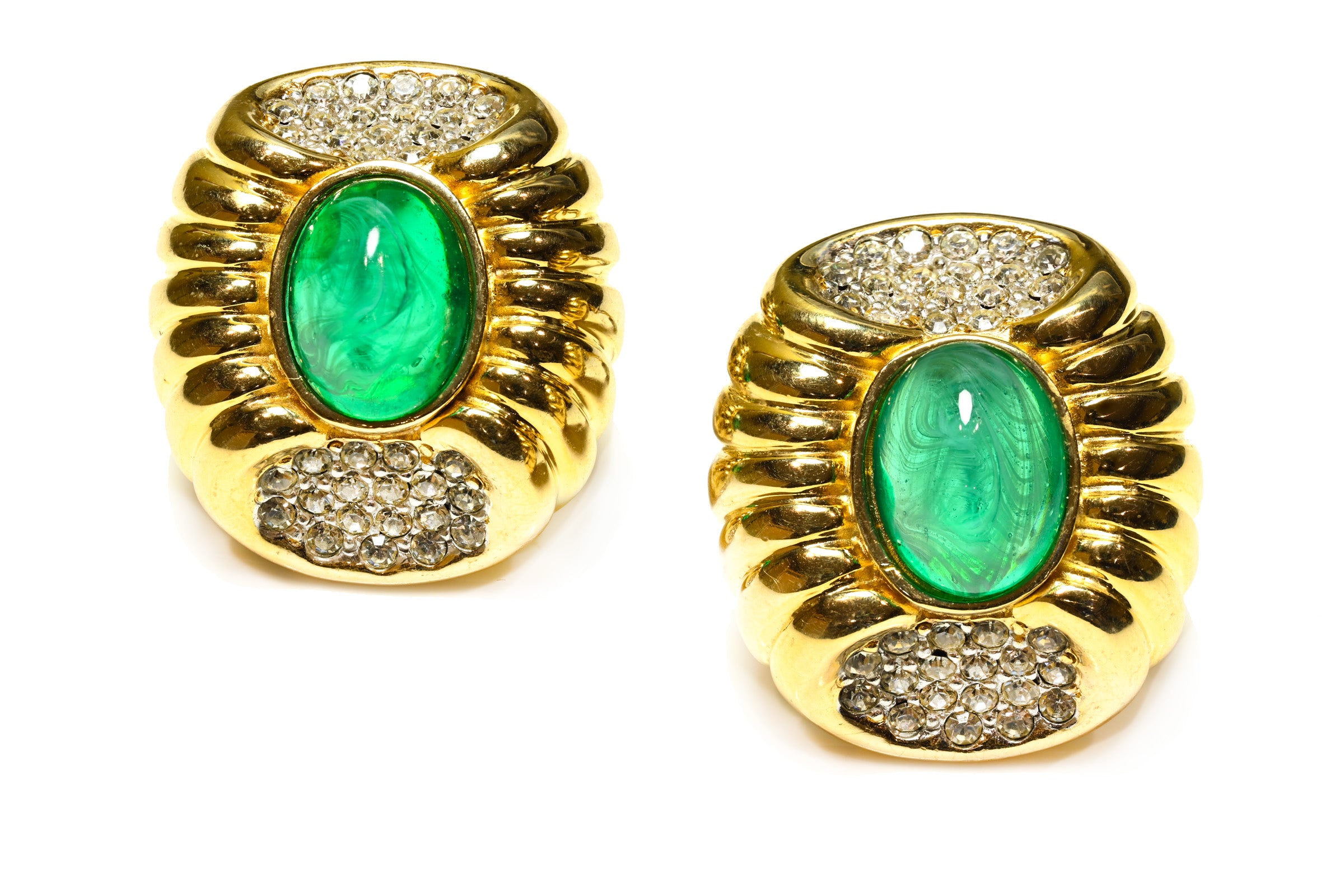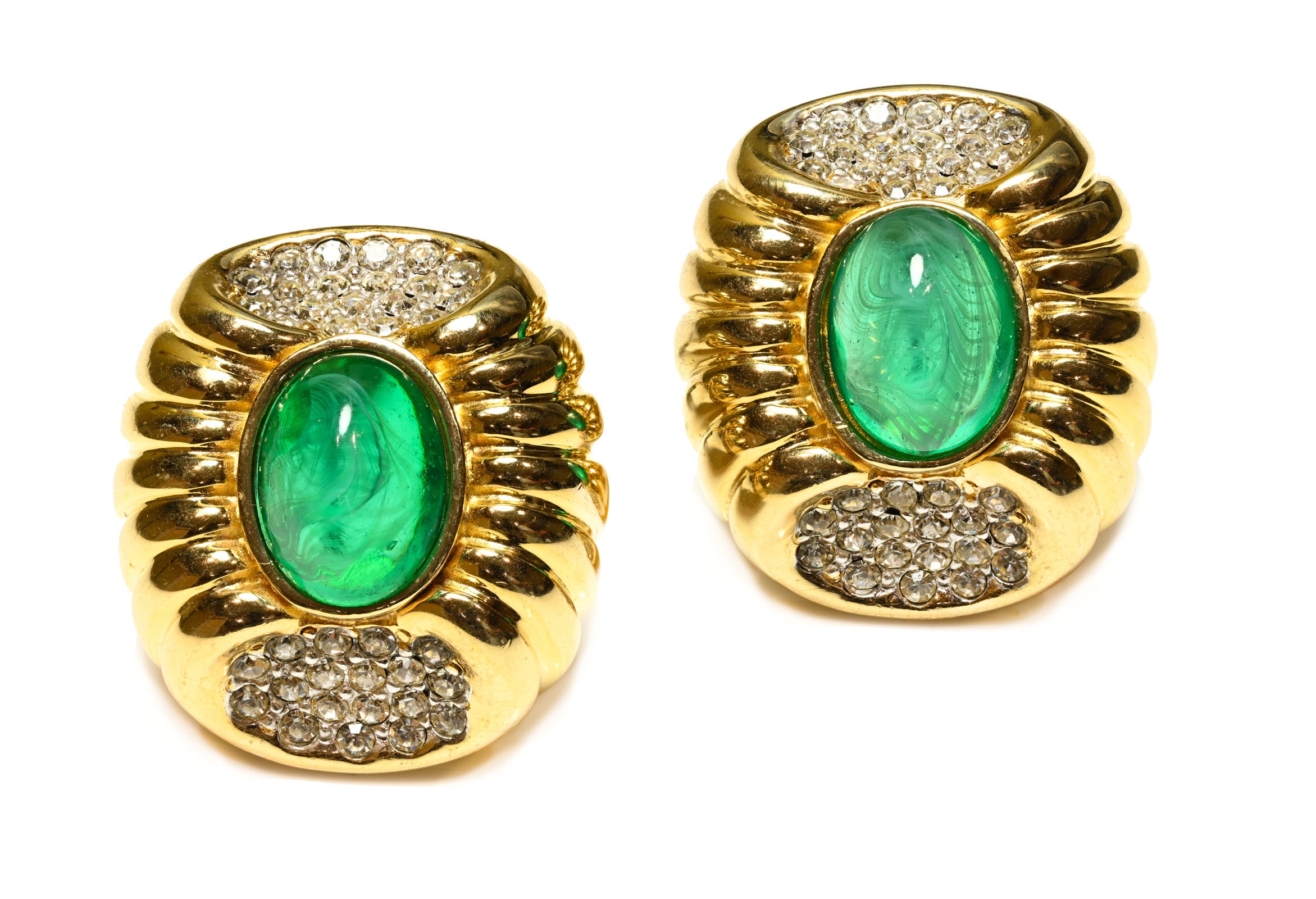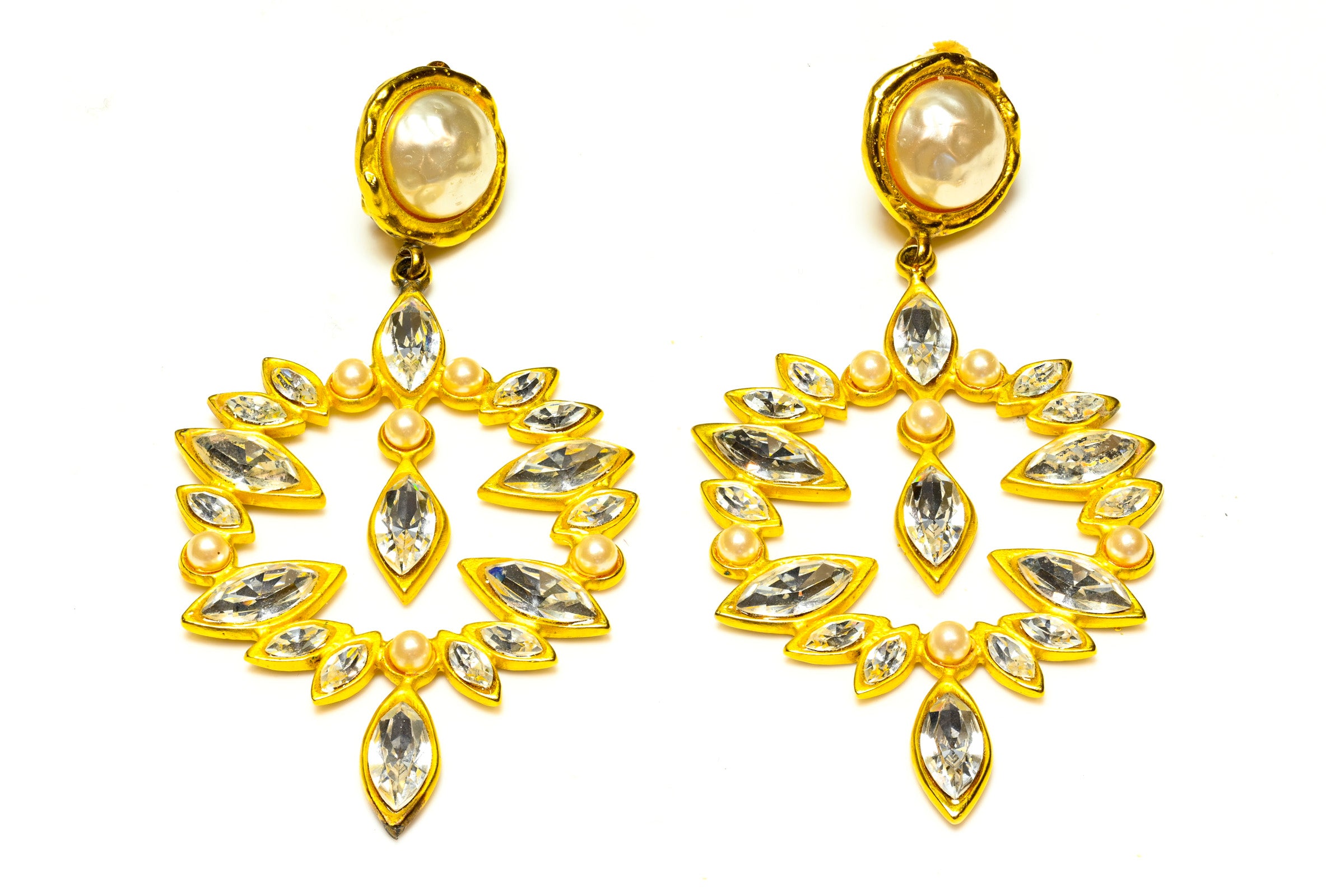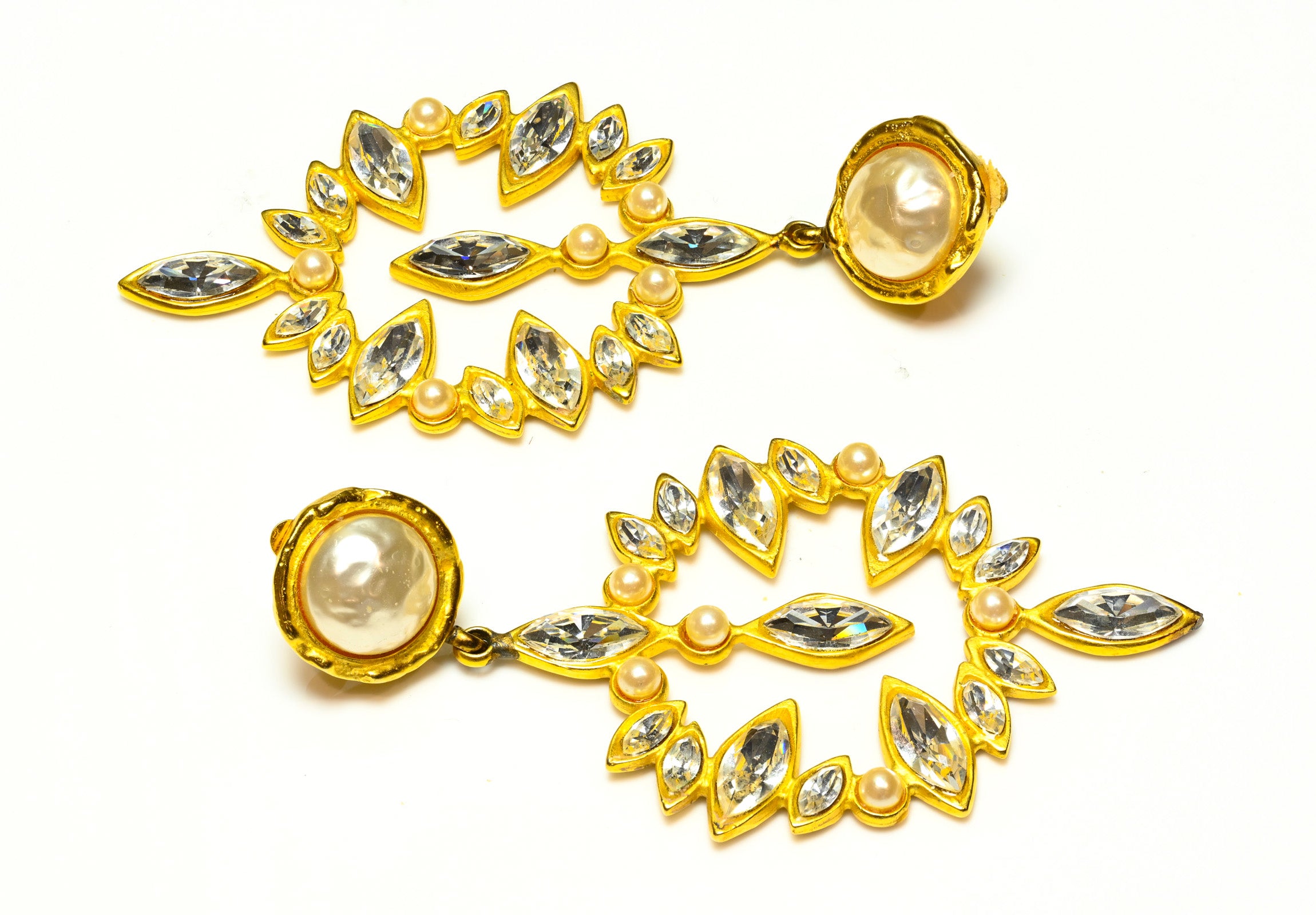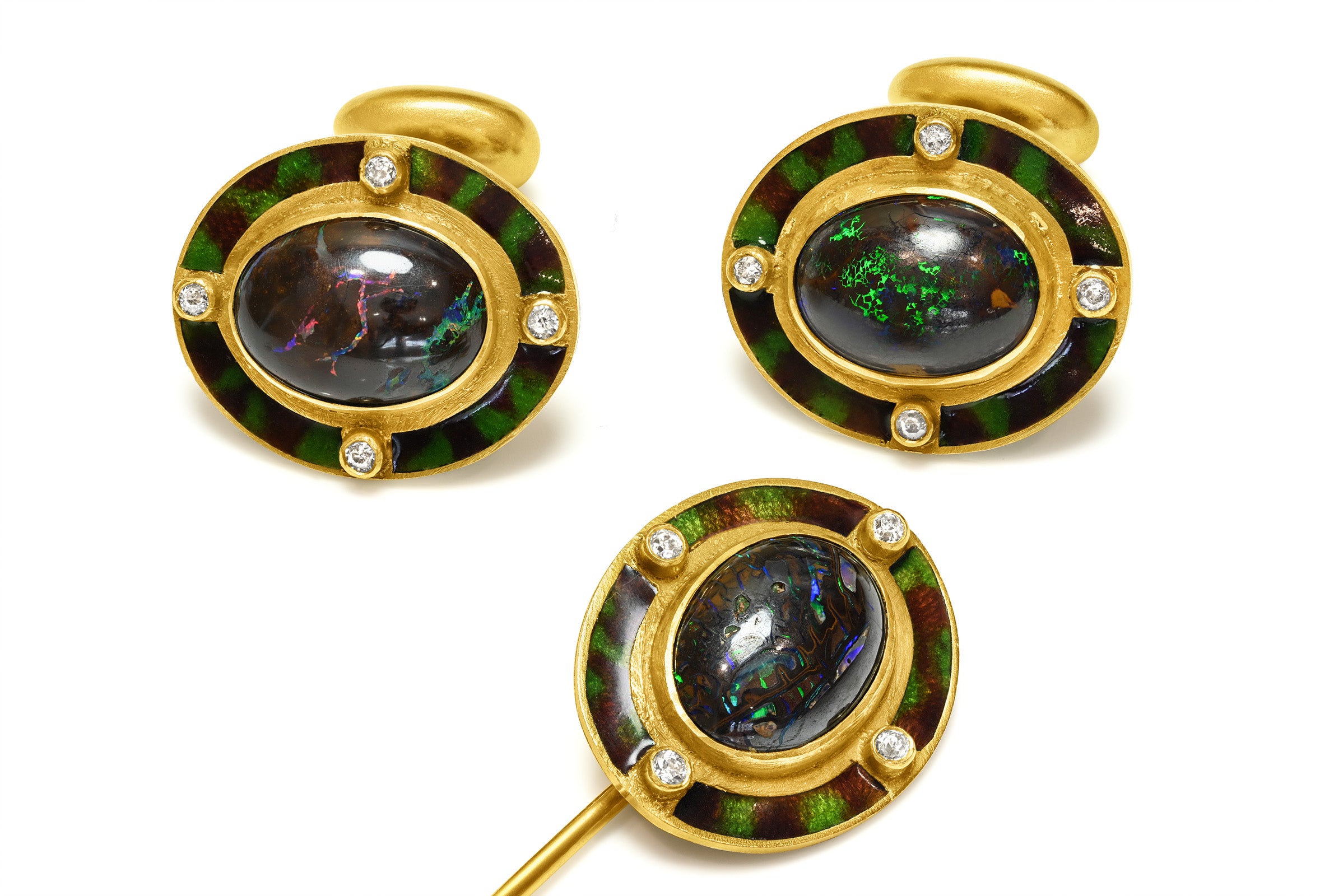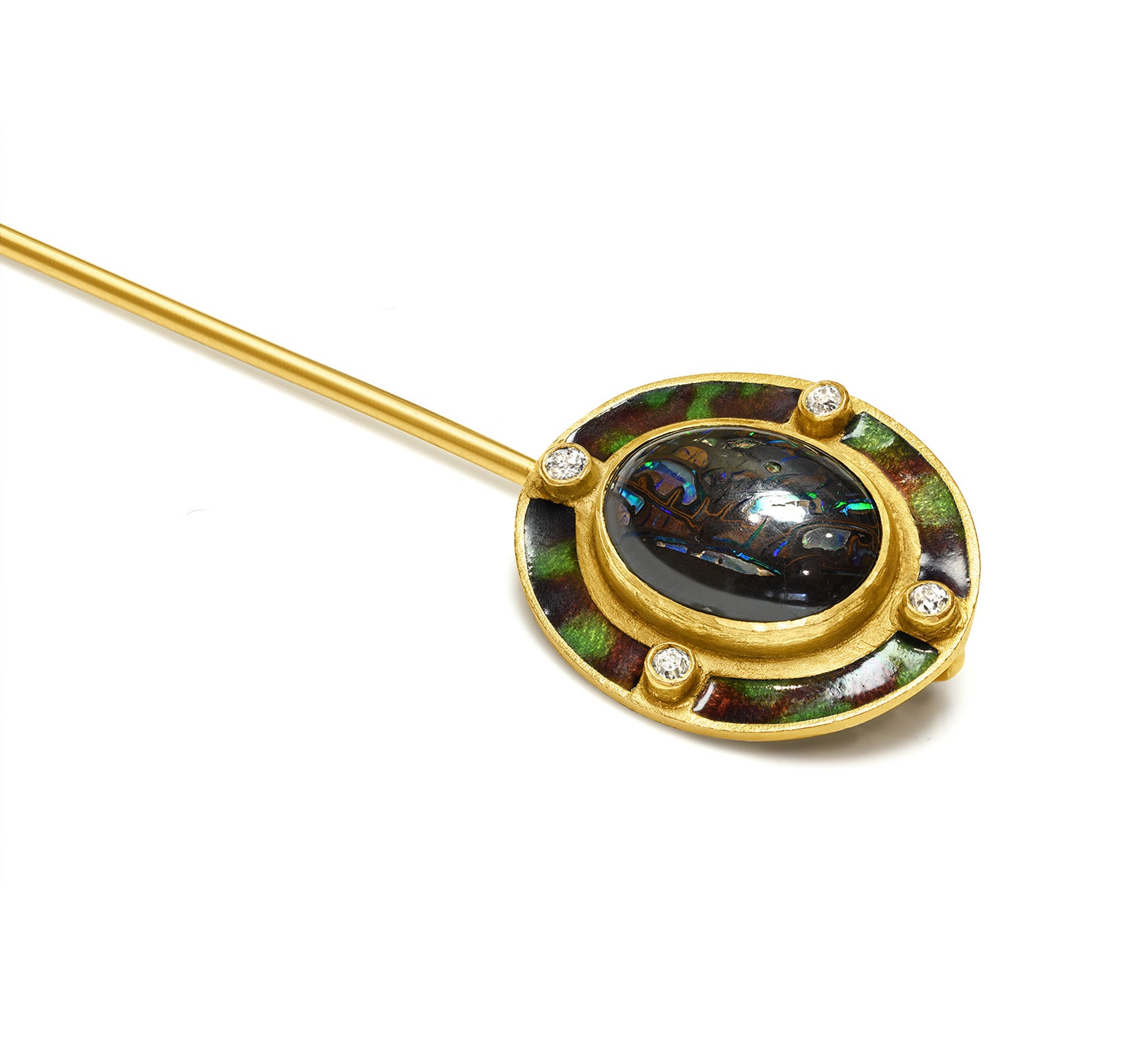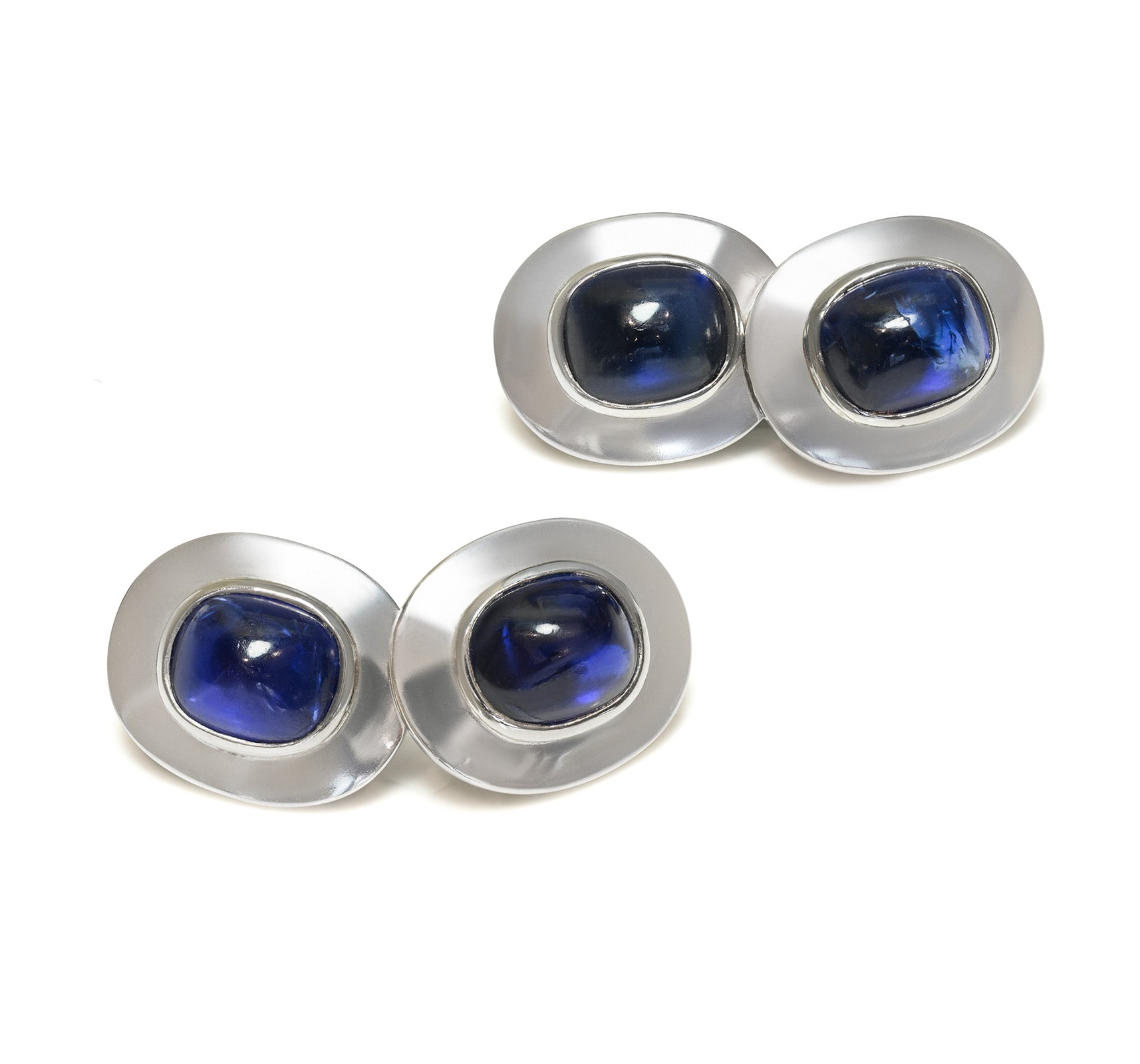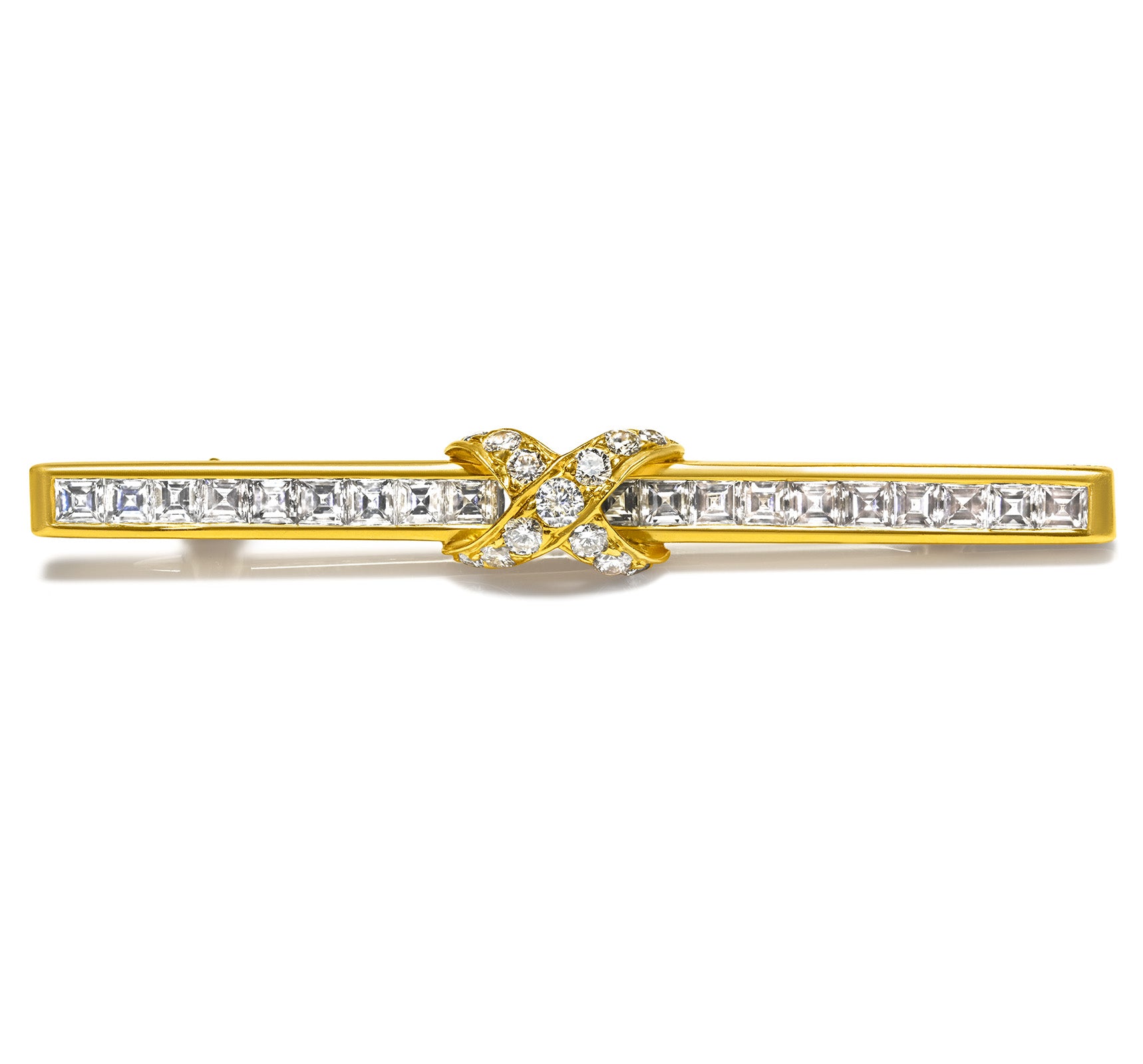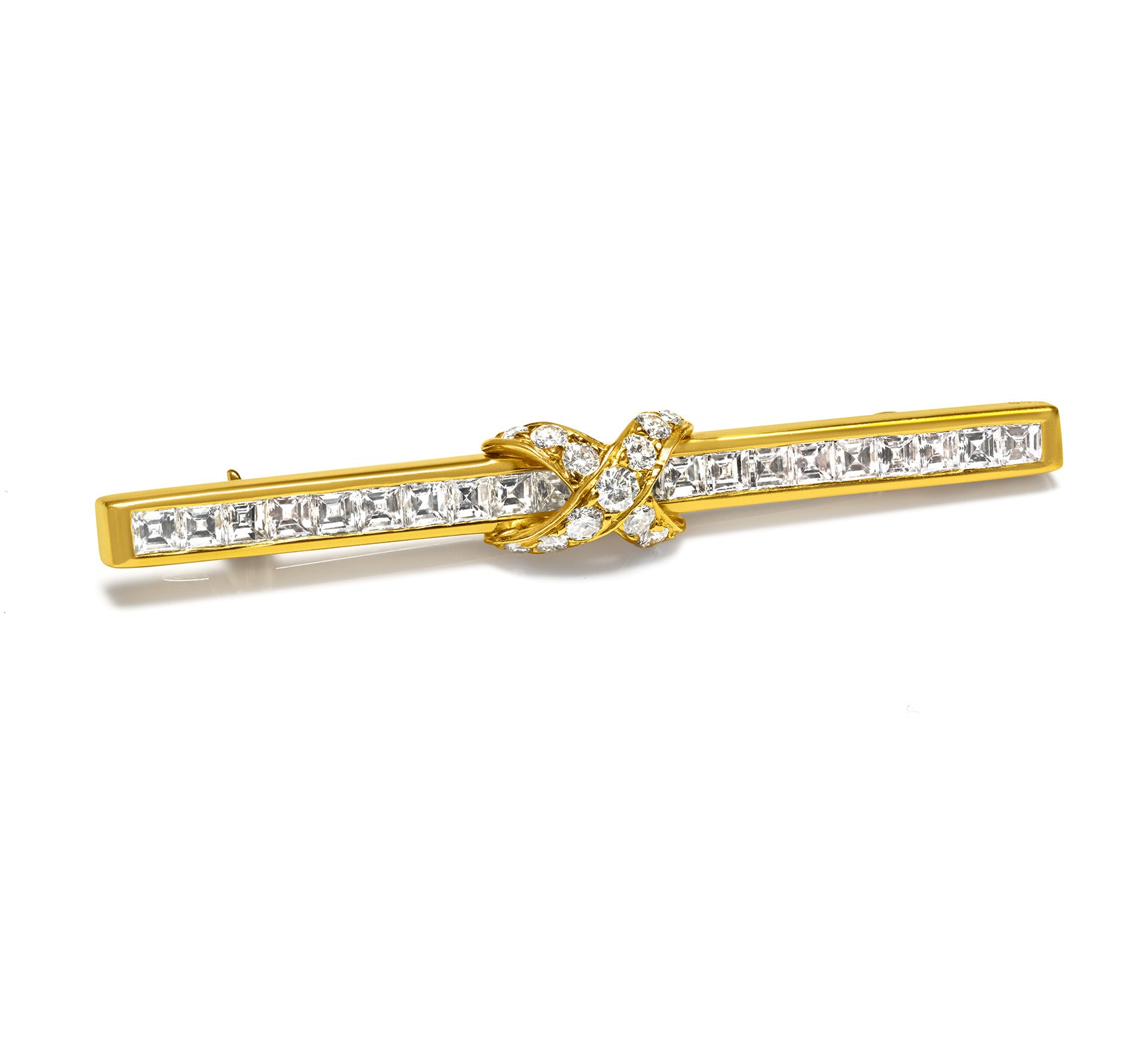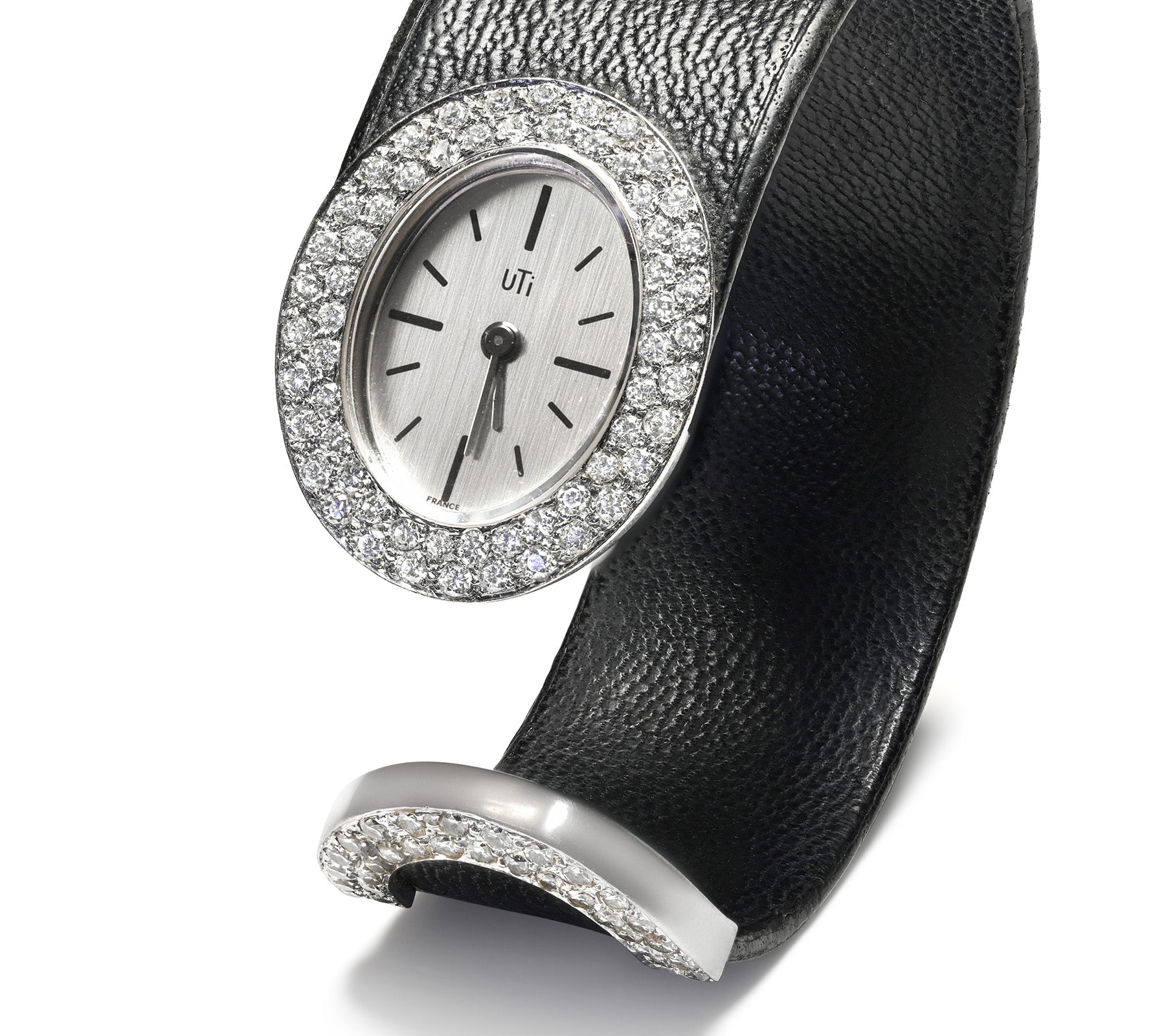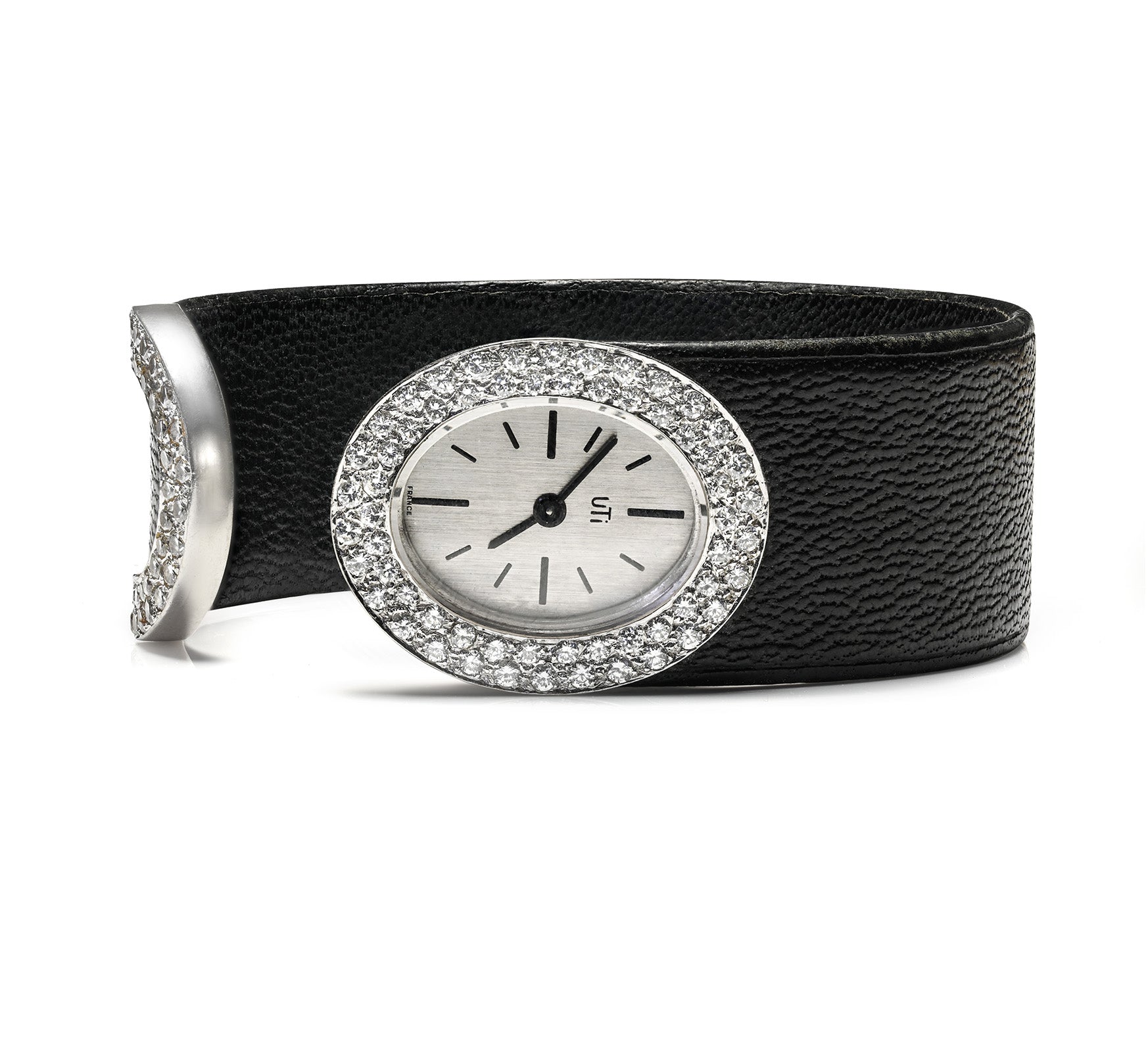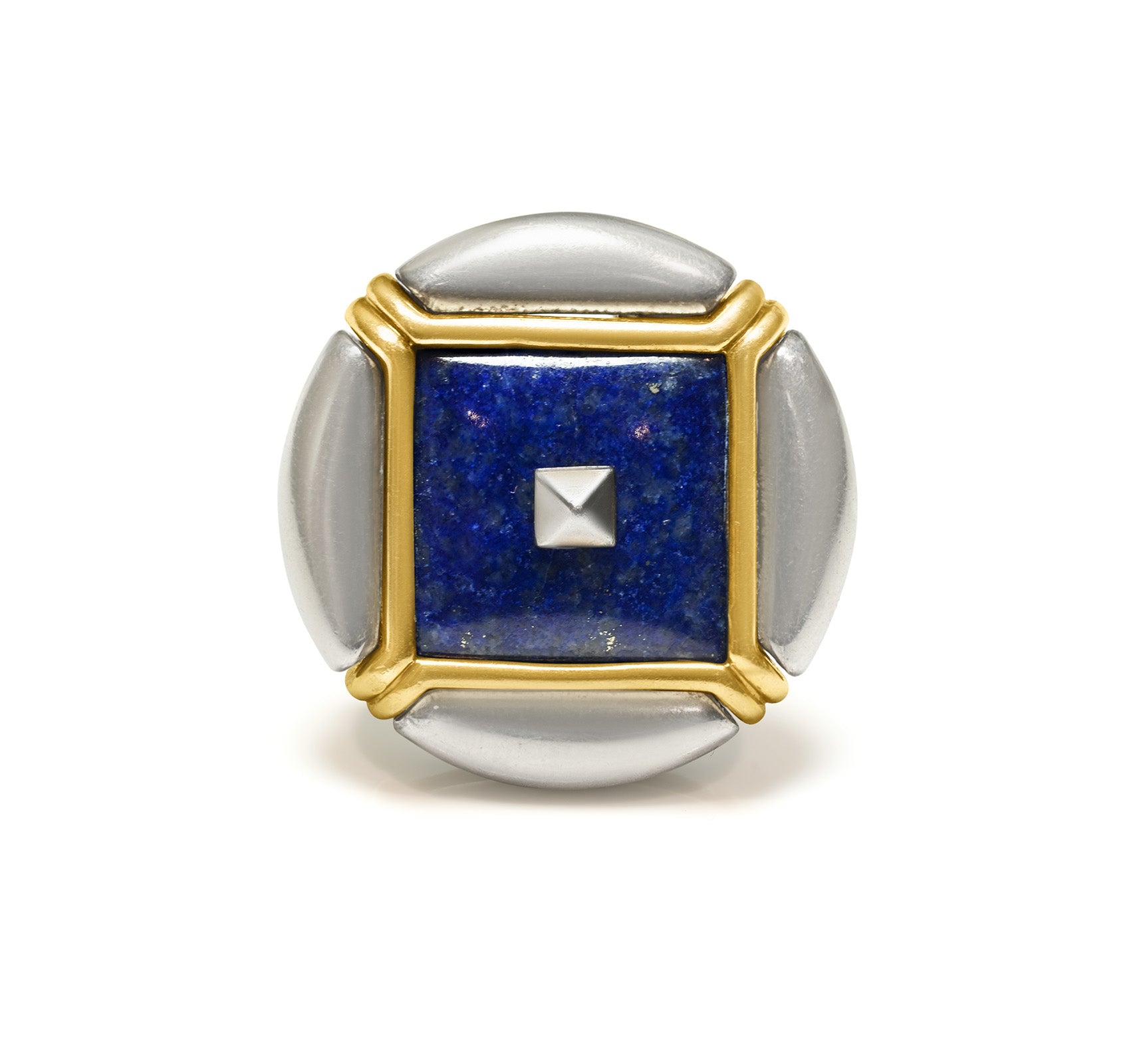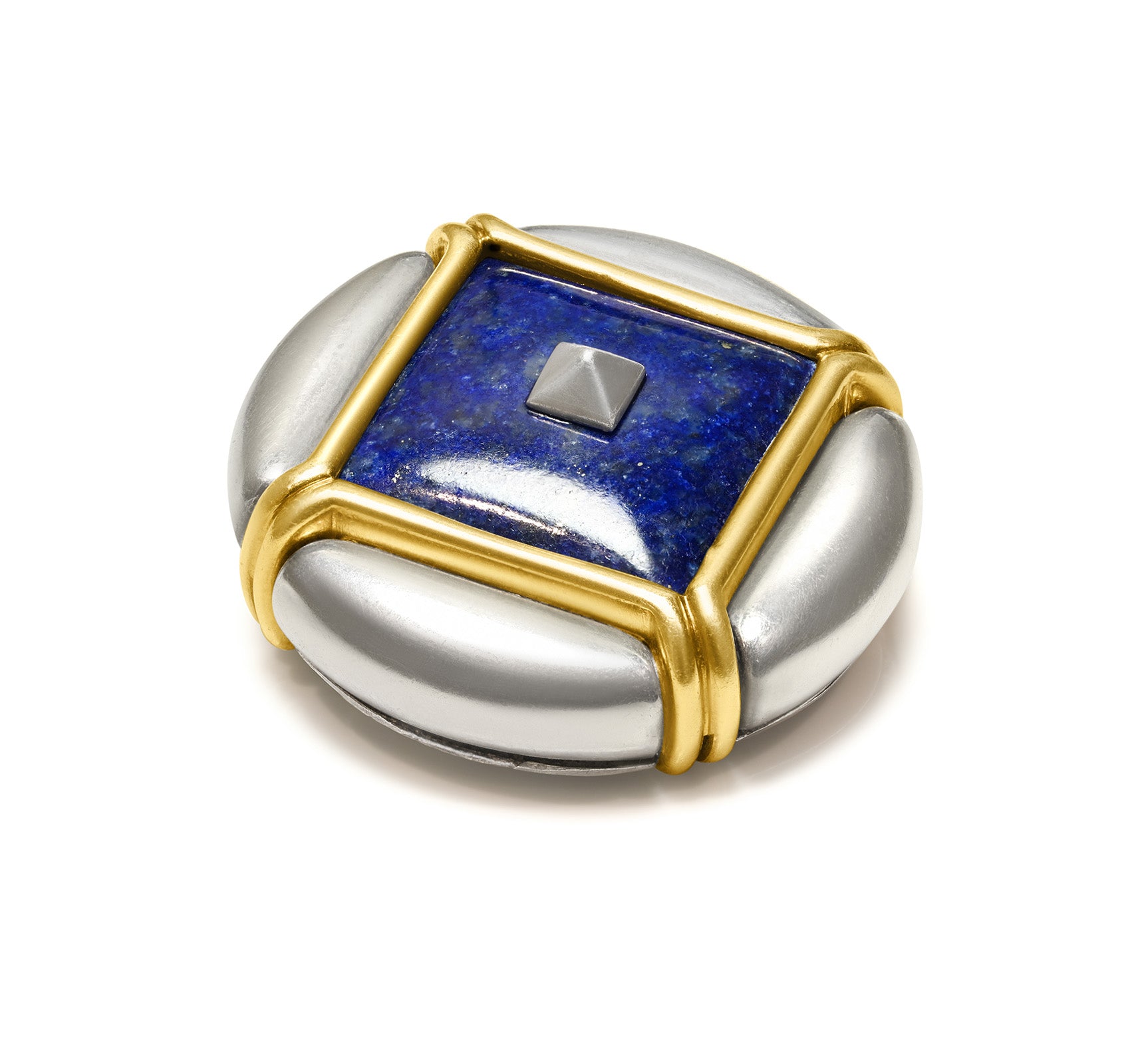
Paul Flato: The Eccentric Jeweler Who Redefined Hollywood Luxury
When we think of luxury jewelry, names like Cartier, Van Cleef & Arpels, and Boucheron often come to mind. Yet, in 1930s and 40s America, one name stood out with unmistakable flair: Paul Flato.
Nicknamed "the jeweler to the Hollywood stars," Paul Flato brought a breath of fresh air to the world of fine jewelry with creations that radiated personality, humor, and bold originality.
Beginnings of a Visionary
Born in 1900 in Texas, Paul Flato did not descend from a family of jewelers, but his early fascination with gemstones and design was undeniable. He began his studies at the University of Texas, but soon moved to New York, where he quickly established himself as a rising figure in the luxury jewelry world.
Unlike many of his contemporaries, Flato was more than a jeweler—he was an artist. Constantly experimenting, he explored new shapes, materials, and techniques that broke away from tradition.

Paul Flato Gold Brooch - DSF Antique Jewelry
Jewelry that Conquered Hollywood
By the 1930s, Flato had opened a boutique on New York’s prestigious Fifth Avenue and quickly became a favorite among the elite and Hollywood stars. Celebrities like Katharine Hepburn, Ginger Rogers, Joan Crawford, and Marlene Dietrich adorned themselves with his one-of-a-kind pieces.
What truly set Flato apart was his ability to reimagine everyday objects as extraordinary works of jewelry—playful, ironic, and luxurious. His oversized bow brooches, whimsical keys and locks, and even perfume bottle motifs were celebrated as artistic marvels.

Paul Flato Lipstick - DSF Antique Jewelry
Techniques and Features of Flato Jewelry
Paul Flato’s designs were defined by several distinctive characteristics:
- Humor and Symbolism – He embraced irony and playfulness, creating daring pieces like ribbon brooches that appeared to wrap around and “hug” the fabric they adorned
- Innovative Design – In an era dominated by symmetry, Flato broke the mold with asymmetrical compositions and surprising gemstone pairings.
- Exceptional Materials – His pieces featured 18K and 24K gold, diamonds, rubies, emeralds, and sapphires of the highest quality.
- Masterful Execution – Though not a bench jeweler himself, Flato collaborated with top craftsmen of the time, including Fulco di Verdura and George Headley, to bring his imaginative sketches to life.

Paul Flato Enamel Gold Tone Crystal Powder Compact - DSF Antique Jewelry
Iconic Jewelry Pieces
Paul Flato designed numerous memorable pieces that earned acclaim in the worlds of fashion and luxury thanks to their originality and flair. Below are some of his most celebrated creations, each notable for its distinctive style and artistic depth:
1. Bamboo Bracelet
- Description: One of Flato’s most iconic pieces, the “Bamboo” bracelet was crafted in yellow gold and platinum, drawing inspiration from the natural form of bamboo.
- Distinguishing Features: Featuring a geometric yet fluid design with elegant curves and asymmetry, it embodied the spirit of Art Deco. Adorned with diamonds and colored gemstones, this bracelet was a favorite among celebrities and a testament to Flato’s imaginative aesthetic.
2. Diamond and Emerald Necklace
- Description: This exquisite necklace pairs radiant white diamonds with deep green emeralds in a striking composition.
- Special Features: The emeralds were arranged in bold, geometric patterns that echoed Art Deco elegance while maintaining a fresh, contemporary feel. Worn by major Hollywood stars, the piece stood out for its opulence and refinement.
3. Ginkgo Brooch
- Description: Inspired by the delicate shape of ginkgo leaves, this brooch showcased Flato’s ability to turn botanical motifs into wearable art.
- Special Features: Crafted in gold and encrusted with diamonds, the design featured graceful, curving lines that mimicked natural foliage. Its intricate execution and stylized elegance made it a favorite among high-society collectors.
4. Rings with Semi-Precious Stones and Diamonds
- Description: Flato's rings often featured imaginative pairings of diamonds with richly colored stones like rubies, sapphires, and tourmalines.
- Peculiar Characteristics: These rings stood out for their architectural composition—central diamonds framed by “gardens” of gemstones in precise, geometric layouts. His bold combinations created vibrant, harmonious statements.
5. Fleur-de-Lis Bracelet
- Description: Inspired by the classic French fleur-de-lis, this bracelet was one of Flato’s most elegant works.
- Special Features: Made in white gold and platinum and richly decorated with diamonds, the bracelet merged historical symbolism with a clean, modern sensibility. Its refined lines and floral charm captured a perfect balance of tradition and innovation.
6. Crystal Flower Brooch
Description: A delicate floral brooch crafted from crystals, diamonds, and pearls, admired for its ethereal beauty.
Peculiar Features: The crystal petals and diamond center were meticulously shaped, evoking the softness of real blossoms. This brooch was especially popular with Flato’s elite clientele, who appreciated its subtle elegance.
7. Animal Motif Necklace
- Description: Featuring pendants in the form of animals such as leopards or panthers, this necklace drew from interwar fascination with wildlife.
- Peculiar Features: Stylized with elegance and precision, the piece combined detailed animal forms with luxurious embellishments of diamonds and colorful stones. It offered a sophisticated take on nature-inspired jewelry.
8. Butterfly Bracelet
- Description: Another standout piece, the “Butterfly” bracelet captured the delicate grace of butterfly wings.
- Distinguishing Features: Made from yellow gold and diamonds, the bracelet displayed finely detailed engraving that mirrored the texture and structure of real wings. Its light, naturalistic design won praise for its charm and poetic beauty.
These extraordinary designs represent only a fraction of Paul Flato’s visionary output. Blending elegance, wit, and Art Deco sophistication, his work continues to captivate both vintage jewelry collectors and modern connoisseurs alike.
Paul Flato in Luxury Watchmaking
Although best known for his extravagant and imaginative jewelry, Paul Flato also ventured into the world of high-end watchmaking. During the interwar period, he created elegant timepieces that reflected his signature style and appealed to the era’s elite.
While his watches may not be as iconic as his jewels, they remain important examples of design-driven luxury.

Paul Flato Sterling Silver Brooch Manual Wind Watch - DSF Antique Jewelry
Here are some notable aspects of Flato’s work in horology:
1. Art Deco-Inspired Design
- Art Deco Style: Flato’s watches echoed the bold geometry and symmetry of the Art Deco movement, featuring sleek lines and sophisticated materials. Diamonds and semi-precious stones were often integrated into the watch case or dial, not merely for embellishment but as part of the overall composition.
- Geometric Dials: Many of his watch faces displayed stylized, angular motifs, aligning perfectly with the visual codes of the time.
2. Bracelet Watches
- Feminine Aesthetic: Flato was especially active in designing women’s watches, focusing on bracelet-style models. These were graceful timepieces that doubled as fine jewelry, often crafted from gold, platinum, or even pearls.
- Exquisite Details: With refined, miniature dials and elegant bands adorned with diamonds, these watches were beloved by high-society women for their dual purpose—both functional and ornamental.
3. Platinum and Gold Creations
- Luxurious Materials: Platinum and gold were Flato’s preferred metals for watches, chosen not only for durability but also for their visual elegance.
- Glamorous Appeal: Often embellished with diamonds or colorful stones, these timepieces combined utility with show-stopping aesthetics—perfect for a clientele that valued uniqueness and prestige.
4. Men’s Watches
- Understated Elegance: Though Flato’s fame centered on women’s pieces, he did produce men’s watches. These were simpler in design, with clean lines and refined dials, maintaining a restrained yet unmistakably high-end appeal.
5. Hollywood Influence
- Celebrity Clientele: Just like his jewelry, Flato’s watches were worn by stars of the silver screen and high society. Marlene Dietrich, Joan Crawford, and other iconic names counted among his clients. His timepieces became status symbols, admired for their craftsmanship and exclusivity.
6. Impact and Legacy
- Rare Collectibles: Today, Paul Flato watches are considered rare treasures in the auction world, prized for their originality and the same fine detailing that defined his jewelry.
- Collector Value: While his watches may not be as universally recognized as his brooches or necklaces, they remain coveted by luxury watch collectors and stand as symbols of a golden era in design.
7. Uniqueness and Timeless Appeal
- Limited Editions: Most of Flato’s watches were made in small numbers, with many being one-of-a-kind. This rarity enhances their value today and contributes to their allure.
Paul Flato’s timepieces are elegant reflections of the Art Deco spirit, marrying form and function in truly luxurious fashion. Whether adorned on the wrist of a Hollywood legend or showcased in a private collection, these watches continue to captivate for their artistry, exclusivity, and enduring beauty.
The Decline and Rebirth of Paul Flato
Flato’s meteoric success was not without turbulence. Despite being the darling of Hollywood's golden era, his career faced a dramatic setback in the 1940s, when he became embroiled in a fraud scandal. He was accused of accepting gemstones and other goods on consignment from suppliers and clients—but failing to return or pay for them as agreed.
In 1943, Flato was convicted of embezzlement and sentenced to federal prison, where he served approximately 16 months. Upon his release, his prominence in the American jewelry scene diminished. Seeking a new beginning, he relocated to Mexico, where he opened a small workshop and continued to design jewelry—this time drawing inspiration from local motifs and traditions.
Although the scandal tarnished his public image, it did not erase his reputation as a visionary designer. While he never regained the level of fame he enjoyed during the interwar years, his work remained a reference point for originality and artistic daring in jewelry design.
Paul Flato’s Legacy in the Jewelry World
Today, Paul Flato’s creations are revered as rare and valuable collectibles. His designs are housed in major museums and private collections worldwide, appreciated both for their craftsmanship and their cultural significance.
Famous auction houses regularly feature his pieces—often fetching impressive prices. His whimsical spirit, unconventional compositions, and fearless innovation continue to influence a new generation of designers.
More than a jeweler, Paul Flato was a visual storyteller. He transformed jewelry from static ornament into a dynamic expression of wit, style, and individuality. His enduring legacy proves that true luxury lies not only in precious materials, but in the imagination that brings them to life.



